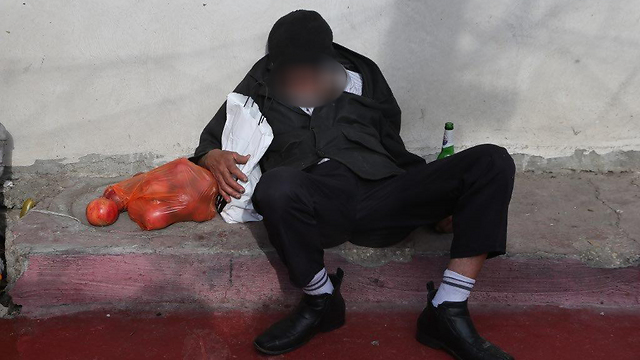
Israel has seen an improvement in its poverty levels, but still lags behind the Western world, says a National Insurance Institute report published Tuesday.
According to the study, 1.6 million Israelis - half of them children - were living in poverty in 2013, out of a total population of 8 million. The report found that while the poverty level in Israel decreased by a few percentage points in 2013, it still had more poverty and wider socio-economic gaps compared to Western countries.
The factors that most helped pull people out of poverty were raises in workers' wages and changes in the method measuring income from work.
The effects of cuts to child benefits, which came in the middle of 2013, could be seen in the report. Poverty levels for families with two breadwinners and those whose head of the family was unemployed both rose.
Meanwhile, government aid to help people escape poverty decreased.
The percentage of families living in poverty fell from 19.4 percent in 2012 to 18.6 percent in 2013. The percentage of children living in poverty went from 33.7 in 2012 to 30.8 in 2013.
The National Insurance Institute warned in 2013 that the benefit cuts spearheaded by Prime Minister Benjamin Netanyahu and then-finance minister Yair Lapid would combine with a VAT hike to sharply increase poverty levels and bring about 90,000 people below the poverty line.
The NII said that Tuesday's report did not fully portray the effects of the cuts, as they had only been put in place in August 2013.
Researchers Miri Endeweld, Netanela Barkali, Dr. Daniel Gottlieb, and Oren Heller ran a simulation comparing effects of the cuts over the course of a year, against a situation in which no benefits were cuts. The result showed a rise in the poverty level of 0.4 percent among families, 0.8 percent for individuals, and 1.4 percent for children.
Quality of life, measured by the median disposable income, rose in real terms by 4.4 percent during the period covered by the report, as did the poverty line, defined as half of median income.
The study showed that an individual earning less than NIS 2,989 a month was considered poor.
Thus, a couple with a combined income of less than NIS 4,783 a month was below the poverty line. A family of five would need at least NIS 9,000 in income to be above the poverty line.

















